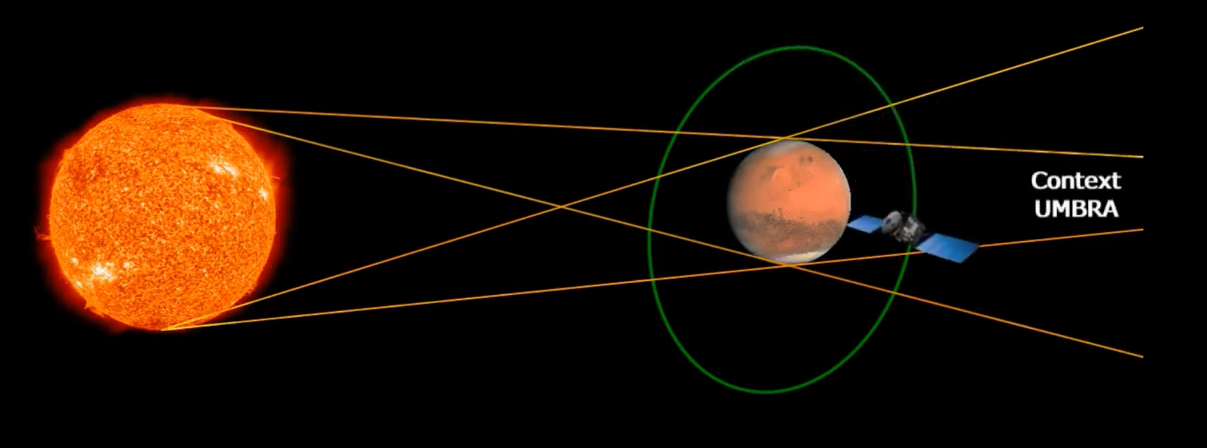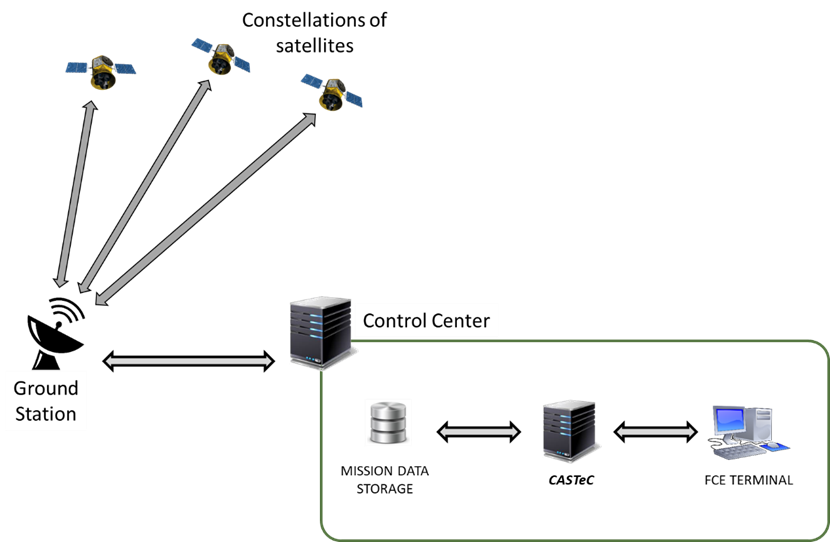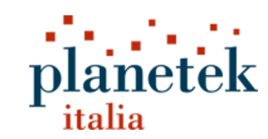
-
StatusOngoing
-
Status date2022-07-29
-
Activity Code6B.079
As of today, the increasingly high number of flying satellites will make impracticable for Satellite Controllers (SCs) to monitor effectively the health status of satellites, especially in large constellations. The goal of this project is to develop CASTeC (Context Aware Spacecraft Telemetry Checking) as a software tool addressing the need for solutions that are able to support SCs by automatically detecting anomalies, predicting failures and understanding the causes of these events, with a view on the entire satellites constellation.
Therefore, the objective of the CASTeC project is to attain full validation in an operative scenario (TRL 8) of the following software product capabilities:
-
Early identification of anomalies in the behaviour of the satellite relative to contextualised standard, a reference period of satellite operations with known operative conditions.
-
Identification of correlated events, thus enabling fault isolation and mitigation strategies definition;
-
Identification of critical operative conditions that may affect satellites’ service performance.
The CASTeC project foresees the involvement of alpha customers who will use the tool supporting the demonstration of CASTeC capabilities in an operational scenario.

The key challenges are the following:
-
Validate on a variety of relevant scenarios CASTeC performance in the telemetry checking, in terms of rates of false and missed alarms and predictive capabilities, and in the identification of potential cause-effect relations among events;
-
Conceive and develop innovative and effective ways to investigate telemetry data and algorithms results;
-
Develop the product as a scalable and flexible multi-user and multi-mission tool that can be easily interfaced with different mission database;
-
Improve the commercial attractiveness of CASTeC, differentiating the product from the competitive landscape.
With respect to potential existing competing solutions, the benefits of CASTeC are the following:
-
CASTeC provides predictive alerts on the status of entire constellations of satellites, based on a detailed analysis of each single telemetry of the constellation, producing a priority list of anomaly events, based on the CASTeC Index that gives a measure of the degree of anomaly;
-
CASTeC supports events troubleshooting by guiding the SC in the identification of potential cause-effect relations among events;
-
CASTeC implements interpretable Machine Learning methods developed by SATE, which is fundamental for the understanding of the reasons of a detected anomaly. This feature is hardly covered by State-of-the-Art Deep Learning of, more generally, Artificial Intelligence techniques typically exploited in this field.
-
The implemented algorithms do not need experts’ knowledge on Artificial Intelligence to be configured, but only limited information and knowledge to define the relevant operative conditions of the satellites.
-
CASTeC is a software module that can be easily interfaced with different ground segment operations platforms.
CASTeC main features are the following:
-
CASTeC characterises the expected behaviour of satellites based on an innovative method developed by SATE, named FETCH (FEaTure CHeckability).
-
FETCH extracts the features of the raw telemetries time series that are “checkable” in a specific context, thereby characterising their expected behaviour.
-
This brings to the automatic definition of checks to be applied to telemetries that are “parameter-specific” and “context-specific”.
-
The advantage of FETCH with respect to a conventional AI is that it is fully interpretable, thus the reasons for the anomalies identified can be explained and understood by engineers.
With CASTeC the user can:
-
Characterise the expected behaviour of the satellites of the constellation in the different operative contexts;
-
Run manual or scheduled checks on telemetry and cause-effect analyses;
-
• Monitor and understand the spacecraft behaviour during operations through the visualization of: raw parameters timeseries, derived features, CASTeC Index and events (such as telecommands). Users can navigate different plots and maps, set custom thresholds in order to see only parameters and features that raise a certain CASTeC Index value and analyse in detail the results. CASTeC may integrate Virtual or Augmented Reality and 3D visualisations developed in other projects, adapted and tailored for the application.
CASTeC is characterised by a typical three tier architecture composed by:
-
a Data Layer, responsible for accessing data from the mission database and storing internal results;
-
a Business Logic Layer, responsible for the execution of manual or scheduled core algorithms analyses;
-
a Front-end Layer, responsible for the visualisation of the information managed and produced by the core algorithms and providing configuration options to the users.
The product is intended to be a software module that can be easily interfaced with Ground Segment operations platforms.
The web-based Human Machine Interface implementation allows the installation of CASTeC on a shared (or external) machine and the investigation of the telemetry from any different location, through a web browser.
CASTeC can be used as standalone tool or integrated with other end users’ tools, through specific APIs, according to their needs.
The following figure represents an example of CASTeC integration with the Ground Segment.

The project comprises the following phases and milestone (MS):
-
Definition Phase: requirements, software architecture, key performance indicators and application scenarios are defined (MS is the Requirement Review)
-
Technology Phase: CASTeC is enhanced and customised for the constellation monitoring scenario. A fine tuning of the visualization tool and algorithms is performed. (MS is the Preliminary Design Review)
-
Product Phase: CASTeC is installed and verified in a non-operational environment, using historical or simulated data. (MS are Critical Design Review, Test Readiness Review and Factory Acceptance Test)
-
Demonstration Phase: CASTeC is installed and verified in an operational environment (MS is Site Acceptance Test).
The Demonstration Phase is ongoing and the SAT review was deemed successful. Three end users are now validating the product in an operational environment and the next milestone is the Final Review.




